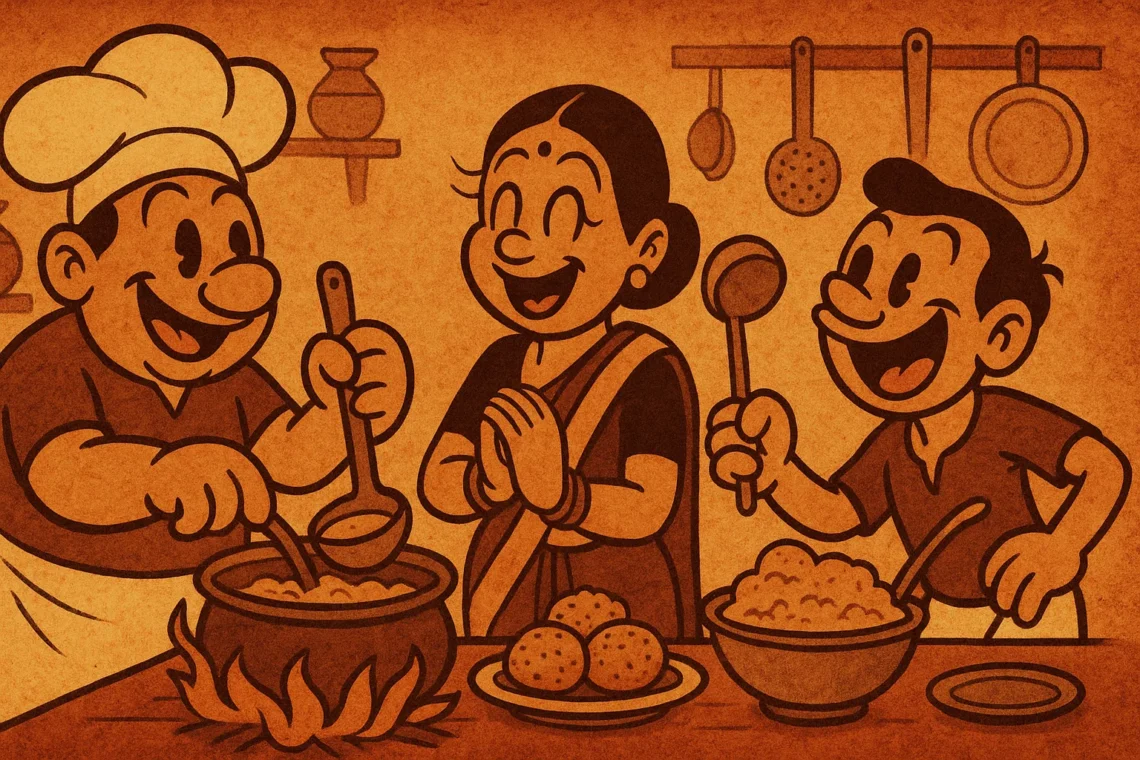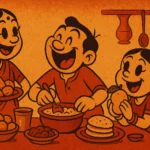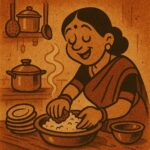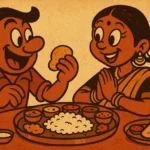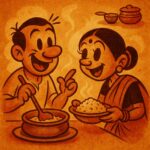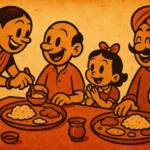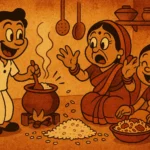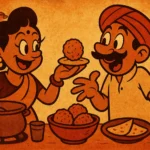In every Indian kitchen, there’s a drawer or a hook or a steel tumbler overflowing with ladles. Slotted ones, deep ones, flat ones, one with a mysterious dent no one will fix. To the untrained eye, they all do the same job: scoop and serve. But if you’ve grown up watching someone cook with them, you know the truth—ladles speak. Their size, shape, and the way they’re used tell you everything you need to know about the food, the cook’s mood, and sometimes even your own status at the table.
In our kitchen, the big round one was for sambar. No debate. It lived in the same pot every time and made that satisfying *plonk* sound when dropped in. The long-handled, thinner one? Reserved for rasam—because you had to pour it just right, with a slight flick of the wrist, never too much. The shallow one with a flat edge? Used for serving sabzi with precision. And that tiny one—too small to be useful, too cute to throw away—was for ghee. Always ghee. Always last.
One Size Does Not Fit All
The wrong ladle wasn’t just inconvenient. It was incorrect. You couldn’t serve dal with the one meant for payasam. You couldn’t flip dosa with the sambar spoon—unless you wanted to invite chaos or commentary from anyone watching. The utensils weren’t labelled, but they were understood. Inherited knowledge passed down not through instruction but by watching: your mother, your grandmother, your aunt, each choosing the right tool like a musician picking the right note.
The ladle you picked also said something about who you were feeding. Big ladle with a heaping scoop? That’s for someone you love. Controlled half-ladle? For someone who’s already had seconds. A full ladle followed by a gentle “Take a little more”? That’s reserved for guests. And if someone got the last bit of rasam with a deliberate tilt and scrape? That was respect. That was love, served hot and final.
Sounds Like Home
There’s a distinct music to ladle use in an Indian kitchen. The clang of steel against a kadhai. The soft gurgle of sambar hitting rice. The crisp ring when a ladle is dropped into an empty pot. These sounds carry through walls and conversations. As kids, we could tell who was cooking by the sound of the ladle hitting the vessel. My mother did it quickly, decisively. My grandmother made it musical, almost like she was humming with the metal.
Even the way a ladle was held told a story. Dads, if they ever cooked, gripped it like a tool. Moms swirled it mid-air, balancing portion and temperature with a flick. Grandparents didn’t lift it much—they let it sit, like a wise elder waiting to be summoned.
Ladle as Language
I once tried to explain all this to a friend visiting from abroad. She asked, “Why do you have so many?” I didn’t know how to answer without sounding dramatic. So I handed her the sambar ladle. She dipped it, served, and looked surprised. “Oh,” she said, “this feels right.” And just like that, she understood. It wasn’t about function. It was about feeling. You don’t measure a ladle’s usefulness by its design—you measure it by memory.
In my own kitchen now, I still keep a chaotic mix of ladles. Some are mismatched, one is slightly bent, another has burn marks near the handle. But each one has a role. The big soup spoon I use for sambar doesn’t match the set, but it reminds me of home. The small one I use for ghee is too short to be practical, but perfect in its scoop. The shallow one for sautéed vegetables never holds much, but that’s its charm—it makes you go slow, savor, serve with care.
Because in the end, the ladle isn’t just a tool—it’s a gesture. And the right one, used at the right moment, says everything that words never could.
Born in Mumbai, now stir-frying feelings in Texas. Writes about food, memory, and the messy magic in between — mostly to stay hungry, sometimes just to stay sane.

